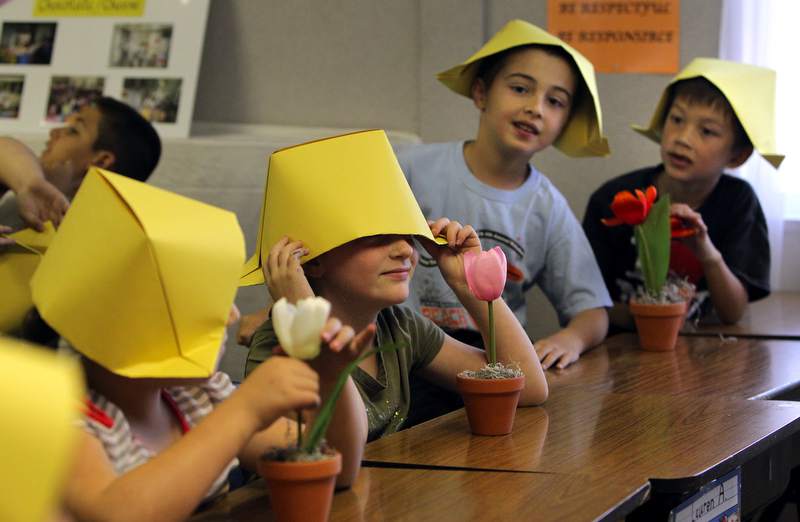Autism and selecting a school for your child
One of the most important decisions we make as parents is selecting a school for our children. For most of us, this is a fairly straightforward affair frequently following a time honoured tradition of attending your local community school. But if your child has diagnosis be it autism or otherwise, then the process of finding a school can present some challenges. Today I want to discuss some of our experiences which I hope will guide your way.
Differing approaches
Schooling and your child can take many forms depending on what your child’s needs are and what services are reasonably available in your community. At its most fundamental, every child is entitled to a free and appropriate education, however how this plays out in practice can vary widely by country and community. There is a continuing tension between governments, school administrators and parents as to what is an appropriate education and what it costs the public purse. So be in doubt you have a very important role in advocating for the best possible education for your child.
In the broadest sense, there are a number of categories of schooling that most of us look at in terms of our child. The simplest form and possibly the most prevalent is supported mainstreaming, where your child is placed in a typical class with some form of supports or curriculum adaptations. This is termed the “least restrictive” educational setting. A variation of this format is a special day class or “unit” which is located on a typical school campus and which tends to serve special needs children exclusively. Then there are specialist schools which focus primarily on children with disabilities. And finally, you can elect to home school your child. Today I am going to talk about educational settings you are likely to find in your community and leave the more specialized (and rare) options for another day.
At various times in the boys school going years, we embraced all of these options moving from option to option as the boys developed and we identified specific needs and goals. In many ways, discussing these options is like asking how long is a piece of string, with a vast array of opinions out there on what works best in this or that case. Everyone has an opinion, but be in no doubt, its you decision what school your child goes to and you are the driver of what expectations are set for your child.
 If I had to identify one thing and only one thing to focus on, in trying to navigate education, its this: focus on the teacher your child will be working with. When all is said and done your child’s teacher lays at the core of what their educational experience will be. If you find a wonderful teacher, almost everything else can be managed.
If I had to identify one thing and only one thing to focus on, in trying to navigate education, its this: focus on the teacher your child will be working with. When all is said and done your child’s teacher lays at the core of what their educational experience will be. If you find a wonderful teacher, almost everything else can be managed.
Finally, no setting will be perfect for your child. Every setting is ultimately a mixed construct between what your child needs and what the school can provide. You need to be clear what you are seeking from the educational setting for your child, including academics, sport, socialization, behavior management and so forth. Every educational setting will be strong in some areas and weak in others. What the school can’t do will ultimately fall to you outside school hours. Try to agree reasonable compromises between what you want and stretching the schools resources. Understand your entitlements and be clear of what your child’s goal are. Be deliberate and determined in advocating for your child. Be sensitive to the school personal that you are working with but also understand you can call in the lawyers if necessary. I once found myself in a conversation with a principal where she told me “we are the only game in town, get used to it”. While the legal route is not trivial, we went to war and ultimately got everything we needed plus legal fees in court. It can be done, but as I said, this is a course not to be taken lightly.
Mainstreaming your child
One of the most available and perhaps simplest settings is supported mainstream education. This is where your child attends a class of typical children with a mix of supports and / or adaptations to the curriculum. In its broadest sense this is my preferred option if at all possible. It is the least restrictive and most ‘typical’ setting for your child. However, many children do start in other setting types and progress naturally into the mainstream progressively over time. Like every setting mainstreaming is a mix of advantages and challenges, One of the greatest obstacles to placing your child into the mainstream is how well your child can cope with all the stimulation that presents in the typical classroom. Many of our children present primarily with language deficits but also sensory issues which make attending to class difficult. This can lead to a lot of anxiety and hyper activity which can really hurt your child’s ability to sit and attend.
There are a range of strategies that can be deployed to compensate for these challenges. Occupational therapy, sensory integration and processing activities can do much to reduce the hyper activity. There is a wonderful video by a 10 year old child describing his understanding of sensory processing which you can find here. This is by far one of our most popular blogs on the topic and is a must read. Another one of my blogs on Jean Ayres and sensory integration can be found here, which is more technical and covers the birth of this science and discusses Jean Ayers wonderful contribution to this important area. In my experience of working with families to world over, understanding and addressing sensory integration needs is the gateway to learning readiness, focus and attention. I just can’t emphasis this enough.
 Having a savvy instructional aid working with your child in the classroom is also critical. Autism and its associated language deficits forces our children into isolation and a world they create for themselves. The Instructional aids role is to ease your child into the classrooms’ world with all its richness. Seeing and grasping teachable moments, connecting your child into play activities with other children, knowing when to take a sensory break among many other activities all feed into the successful integration of your child into the mainstream classroom. The aid and teacher must work together hand in glove, keying off one another to make the total experience in the classroom successful. Embedded in all this is that the classroom teacher is committed to having your child in the classroom and making the construct work.
Having a savvy instructional aid working with your child in the classroom is also critical. Autism and its associated language deficits forces our children into isolation and a world they create for themselves. The Instructional aids role is to ease your child into the classrooms’ world with all its richness. Seeing and grasping teachable moments, connecting your child into play activities with other children, knowing when to take a sensory break among many other activities all feed into the successful integration of your child into the mainstream classroom. The aid and teacher must work together hand in glove, keying off one another to make the total experience in the classroom successful. Embedded in all this is that the classroom teacher is committed to having your child in the classroom and making the construct work.
While all this sounds wonderful, there are a number of watch outs that you need to keep in mind. Mainstreaming tends to be most successful in social development but can lag on academic or skills development. Adaptations of curriculum to give learning access to your child can be poorly done and moreover teachers can delegate the total teaching experience of your child to the aid. In its worst form your child and aid can become isolated from the class. The overall effort can diminish to a baby sitting and behaviour control exercise leading to ever increasing problems over time. Additionally, classroom teachers can resist having children with learning differences in their classroom as can the parents of other typical children in that setting. While there are systems and safeguards like IEP (individual educational plan) planning meetings, what really matters is what is going on in the classroom on a day to day basis. The boys spent time in main stream settings at various stages of their elementary education. Some where wonderful while others were downright awful leading us to take legal action to sort matters out. One thing we always kept in mind, Conor and Eoin were our children and we exercised their rights to an appropriate education as their parents. We had good advisers, but ultimately we made the decisions that had to be made.
Special day class or special needs unit
 Unlike mainstreaming, finding a special day class in your community that fits your child’s needs can be a challenge. If you do find one, then the key questions you will need to think about are what advantages the more focused, specialized and higher resourced setting offers given the lack of typically developing peers in the classroom. Understand what opportunities exist for mainstreaming in the future and in general throughout the school. I wrote a post specifically about this topic covering some our experiences and that of the boys. You can find this post by clicking here. As I mentioned above the teacher working with your child is the vital person in the classroom with everything flowing from here. I have had the opportunity to personally work with some excellent settings both with the boys and more recently. And again, what made them excellent was the class teacher. It’s not just what happens in the classroom, but also the relationship the teacher has with other mainstream classes and activities around the school valuable to your child’s development. As Hillary Clinton frequently commented, it takes a village to raise a child. And a school is one big piece of the village.
Unlike mainstreaming, finding a special day class in your community that fits your child’s needs can be a challenge. If you do find one, then the key questions you will need to think about are what advantages the more focused, specialized and higher resourced setting offers given the lack of typically developing peers in the classroom. Understand what opportunities exist for mainstreaming in the future and in general throughout the school. I wrote a post specifically about this topic covering some our experiences and that of the boys. You can find this post by clicking here. As I mentioned above the teacher working with your child is the vital person in the classroom with everything flowing from here. I have had the opportunity to personally work with some excellent settings both with the boys and more recently. And again, what made them excellent was the class teacher. It’s not just what happens in the classroom, but also the relationship the teacher has with other mainstream classes and activities around the school valuable to your child’s development. As Hillary Clinton frequently commented, it takes a village to raise a child. And a school is one big piece of the village.
Some closing thoughts
For Val and I, we needed to invest substantial time in listening to, learning and collaborating with the class teacher’s efforts to grow Conor and Eoin, including frequently meeting their instructional aid. When it was working well, it was all about the boys and how best to grow them in class and at home. We all understood what our roles were. Keeping the boys productively busy, with clear line of sight on what the educational goals were. And most importantly how we were achieving them. We understood early on that the boys had substantial learning differences and that they were not going to fit neatly into any educational setting. While it was exhausting and frustrating at times we knew that we had to lead the overall process and monitor it constantly to ensure the boys were succeeding. And that made all the difference!







Leave A Comment